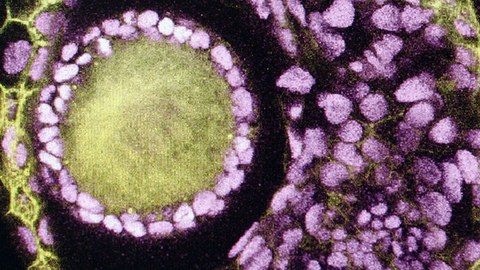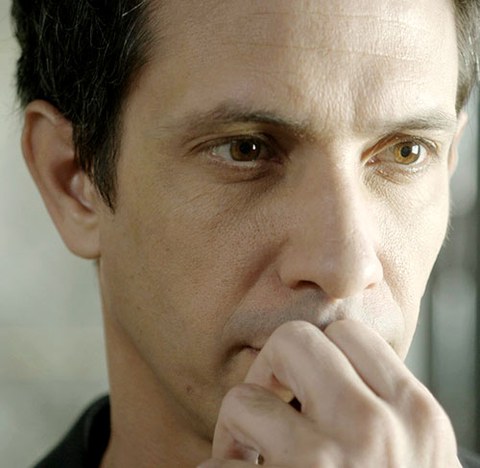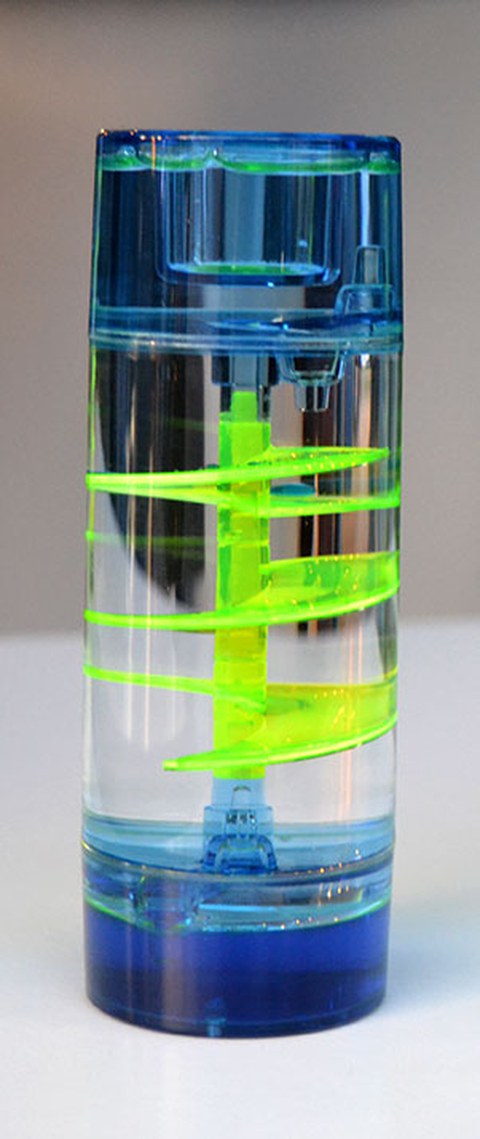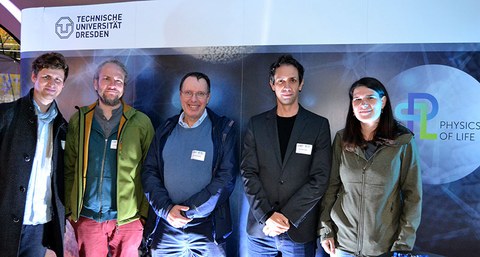Nov 03, 2022
Understanding life down to the smallest detail
Dagmar Möbius
Physics of Life (PoL) is one of the 57 Clusters of Excellence that the German Research Foundation started funding in 2019 for a period of seven years. Physics of Life investigates fundamental questions of cell biology and developmental biology.

Understanding life down to its smallest building blocks is the aim of "Physics of Life."
The heart beats on the left. But why? How do the laws of physics influence our DNA? What distinguishes living matter from dead matter? Where does life come from? These are some of the questions scientists in the “Physics of Life” Cluster of Excellence are working on. These are specialists from the fields of physics, biology and computer science. “We want to understand life down to its very smallest building blocks,” says Cluster Speaker Professor Otger Campàs. “We are aiming to gain a deeper understanding of phenomena. How the foundations to everything work. This is deeper than biology,” adds Cluster Co-Speaker Professor Helmut Schießel. In other words: Physics of Life approaches biological processes as complex phenomena with its roots in physics. If we can understand how life is organized, we will be able to find new approaches for tackling health problems in our society.
Fundamental research for life

Cluster Spokesperson Prof. Otger Campàs
To this end, researchers from TU Dresden and research institutions within the DRESDEN-concept alliance are working together in the cluster. More specifically, 39 research groups from the Max Planck Institute of Molecular Cell Biology and Genetics (MPI-CBG), the Max Planck Institute for the Physics of Complex Systems (MPI-PKS), the Leibniz Institute of Polymer Research (IPF) and the Helmholtz-Zentrum Dresden-Rossendorf (HZDR) are involved in the cluster. The complex task of understanding the dynamic organization principles of the living state of matter is organized into six research avenues (RAs). Three avenues aim to identify and test theories that govern the dynamic organization of active living matter in space and time at the scale of tissues (RA1), cells (RA2), and molecules (RA3). Avenues four to six aim to develop a generic physical theory of living matter (RA4), to test insights using advanced techniques and approaches in scientific computing and systems microscopy (RA5) and to demonstrate understanding by engineering the dynamic organization of living matter (RA6).
Award-winning international work

Using this model, the researchers demonstrate the specific biological functions of oil and water droplets in cells.
“If we understand life, we can design active substances for medicine, for example,” said biophysicist Professor Helmut Schießel. He also mentioned the droplets discovery: “In the last 100 years, we completely overlooked the fact that oil and water have specific biological functions in cells. We are now researching where the droplets should be directed in order to bring about an effect.” The cell biologist Anthony Hymann made groundbreaking findings in this area and has received awards for his research, most recently the Körber European Science Prize 2022, which is endowed with one million euros.
In the international “Physics of Life” Cluster of Excellence, numerous research groups are working on complex questions. The computer scientist Dr. Robert Haase leads the Bio-image Analysis group, for example. He is a globally renowned expert in microscopy-related image data science and high-performance image computing. For his efforts towards promoting advanced open source image analysis in microscopy and biology, Dr. Haase and his colleague from the University of Edinburgh are the first scientists to receive the newly established Royal Microscopical Society Award for Data Analysis in Imaging.
Opportunities for early-career researchers
There are still open positions that need filling at the Institute. “We are always on the lookout for excellent minds. You need to be interested in a lot of different things here,” says Professor Helmut Schießel. The PoL Cluster of Excellence has designed a two-year interdisciplinary Master’s degree program to train their own early-career researchers. In October 2022, 25 students with different professional backgrounds began studying the newly established English-language Master’s degree program, “Physics of Life.” “If I could study again, this is what I would do,” Schießel says with a grin. He specialized in biophysics starting in 1999 and “backed the right horse.” As a researcher, you can never know in which field jobs can be found. As he sees it, “It’s the topic that’s important.”

From left to right: Dr. Marcus Jahnel, Dr. Robert Haase, Prof. Helmut Schießel, Prof. Otger Campás, and Dr. Ellen Adams are some of the researchers working in the Physics of Life Cluster of Excellence.
Contact:
PoL | Physics of Life
Tel.: +49 351 463-82111
